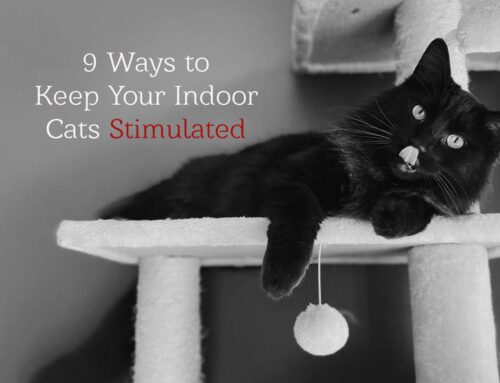We’ll be the first to admit that cats are often unpredictable and silly creatures. Nearly every cat owner we know tells us about some unusual quirk that’s unique to their kitty.
Most of the time, these behaviors are simply amusing anecdotes. But occasionally, we’ll hear or see something that indicates there could be something else going on that’s causing the cat to act strangely.
Read on for a few of the most common ones so you’ll know what to watch out for.
1. Vomiting
Almost all cats throw up on occasion. Usually, they ate and/or drank water too quickly or without chewing well. If your cat is vomiting more than once a week or even consistently once a week, you should visit your vet for an exam.
2. Lethargy
This is where being an observant pet parent comes in handy. The fact is cats sleep… a lot. Most cats sleep between 12 to 18 hours a day, sometimes more. And cats tend to start sleeping longer as they get older. But it’s important to notice if your cat suddenly starts sleeping more than usual. If they have less energy than usual, it’s time to contact your vet.
3. Urinating Outside The Litter Box
If your cat suddenly begins urinating in strange places in your house, it’s probably not because they want to annoy you. Of course, it could be psychological (stress, marking territory, a major change) but it could also be due to diseases in the urinary tract. Visit your vet to rule out physical problems before addressing possible behavioral triggers.
4. Meowing
Meowing is a normal and healthy way for cats to communicate with their humans. Fun fact – adult cats in the wild don’t meow as it’s primarily a way for kittens to communicate with their mothers. But if the way your cat is meowing changes suddenly, they may be trying to tell you they’re in pain and need help. So, be on the lookout for meowing that’s more frequent, louder or different in sound than usual.
5. Head Pressing
Have you ever seen a cat that rests or sleeps with its face pressed down or against a hard object? It may look cute and funny, but it might be a sign of a serious health issue. A cat might display this behavior if experiencing neurological problems, metabolic disorders, a tumor, infections, or even head trauma. If you notice this behavior, don’t hesitate to schedule a checkup with your veterinarian.
6. Overgrooming
Cats are pretty fastidious about keeping themselves clean, which is just one of the many things we love about them. However, cats who begin grooming themselves too much might be experiencing anxiety or pain in the area they are overgrooming. Look for spots on your cat’s fur where there is less fur if you suspect an issue.
7. Changes in Behavior
This is pretty vague, admittedly. But the fact is you know your cat best. So always be observant of their behavior and take note of major changes in the way they eat, drink, sleep, play and interact with you and other pets. If you notice a sudden or dramatic shift, you should visit your veterinarian for a check-up.







